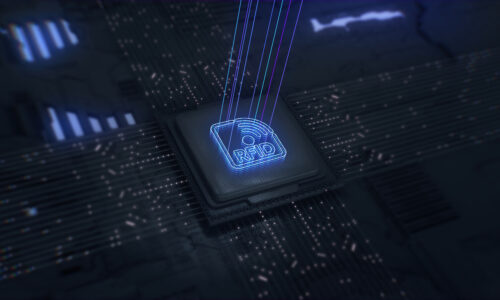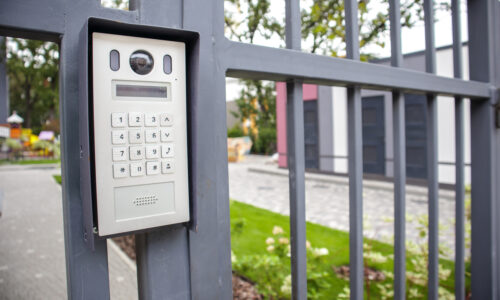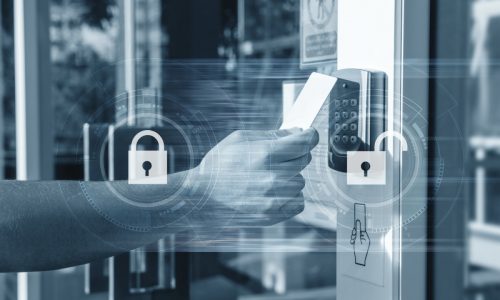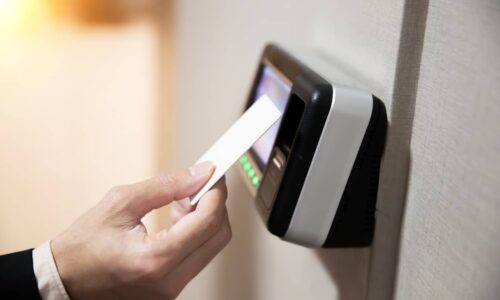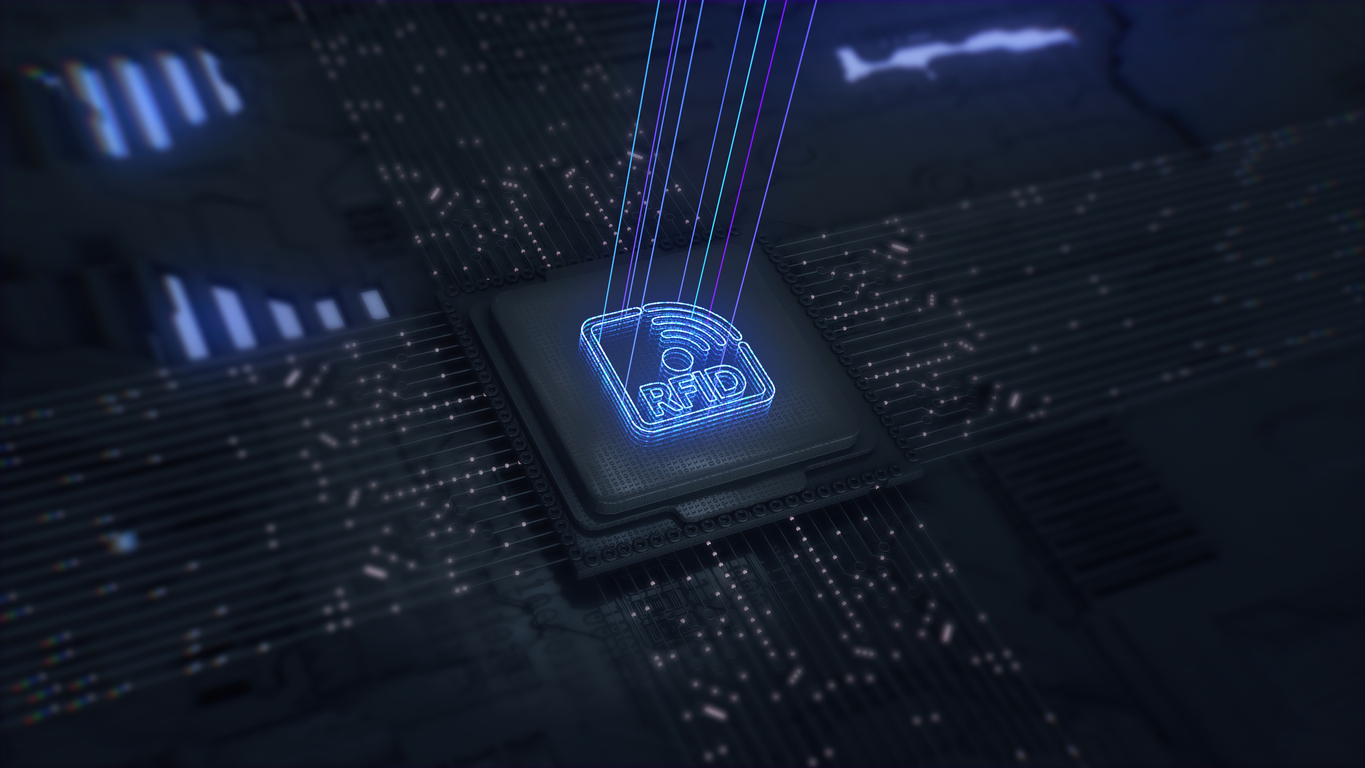
What is RFID?
26 July 2022
Radio-frequency identification, or RFID, has been gaining traction by the day as retailers and consumers increasingly embrace it.
Today, many applications take advantage of RFID technology, such as tracking goods, collecting tolls, paying via credit cards, granting access to vehicles in gated communities, etc. You probably use this technology on a daily basis but aren’t aware of it.
For instance, do you check out your grocery store by waving your credit/debit card at the payment terminal? You’ve used RFID. Have you ever tracked your dog with the help of a microchip implant? You’ve used it too.
The RFID industry continues to grow rapidly as more retailers become aware of the benefits this technology brings along. Currently, the RFID market is estimated at $14.5 billion. The industry is projected to grow at a CAGR of 11.9% to reach $35.6 billion by 2030.
But what exactly is RFID?
This article will discuss RFID technology in detail and explain how it works. We’ll also briefly go over the various applications of RFID.
How does RFID Technology Work?
Radio-frequency identification (RFID) is a technology that provides wireless identification and tracking capability by using radio waves to read, capture, and track tags. An RFID system comprises two components:
- Tags
- Readers
An RFID tag provides an easy way to assign a unique identity to an object. A tag can be as small as a button, and some don’t need an internal power source.
These tags are attached to objects and can be read from several miles away. Tags can be active or passive. Active RFID tags are powered by batteries. Passive tags, on the other hand, have no battery and are powered by the reader.
The reader contains antennae that transmit radio waves and receive signals back from the RFID tag. Tags use these radio waves to communicate their identity to the reader. These tags can carry a lot of information, including serial numbers and several pages of data.
RFID is typically similar to barcodes. However, unlike barcodes, no direct scanning is required for RFID tags.
How Does RFID Work?
An RFID tag transmits and receives information through an antenna and microchip. The process is simple and takes only three simple steps.
- When an RFID tag for inventory passes within the range of an RFID reader, it captures the energy from the reader’s signal and utilizes it to power the tag’s circuitry.
- The tag then sends back its unique identifier code to the reader. Note that tags contain a microchip that stores information about the object to which they’re attached.
- The reader, which is connected to a computer, then looks up the unique code in a database, accessing information about the item being tagged. The accessed info might include the item’s name, location, history, or other data.
The RFID technology has evolved a lot since its first use by the military in the 1970s. Not only does it get better each year, but the costs associated with its adoption keep decreasing, making RFID more cost-effective and efficient.
Uses of RFID
RFID tags work great on cardboard and dry surfaces, although you can buy specialty tags for metal and plastic items. And because it works on most surfaces, RFID is ideal for:
Inventory Management
RFID technology has completely transformed the retail landscape, especially when it comes to inventory management. With RFID, inventory can be accurately replenished and easily located without negatively impacting operations.
Moreover, RFID provides businesses with valuable insights into their inventory. It reduces the need for human input, leading to highly accurate and reliable inventory records.
Supply Chain Management
RFID technology is used to accurately count, update, and track individual items across the supply chain. The process starts in the production, where the items are tagged at the source, moves to the distribution center where the orders are sorted, and finally sent out to stores.
Warehouse Management
Businesses can instantly identify individual items in containers in a warehouse through a quick scan. It can also help to automate item receipts and delivery reports.
Healthcare
RFID technology is widely used for various activities in a healthcare setting. Some of the applications of RFID in healthcare and hospital settings include:
- Inventory management
- Equipment tracking
- Monitoring patients
- Preventing the distribution of counterfeit drugs
- Ensuring patients receive the correct medication
- Out-of-bed and fall detection
- Providing data for the electronic medical records system
The Medicines and Healthcare Products Agency (MHRA) has not identified adverse events associated with RFID. So, it’s safe to say that RFID will not negatively impact the patients.
Security & Access Control
RFID can also be used to provide security and manage access control.
For instance, organizations could use RFID tags to allow entrance to a secure area. They could also use it to allow or deny access to certain areas. For example, an RFID tag can be used to grant access to vehicles in gated communities.
Contactless Payments
RFID tags can be used to simplify the checkout and minimize queueing in grocery stores and shopping centers. Tagging items with RFID codes eliminates the need to scan individual barcodes at the point-of-sale terminal.
Once the customer has done shopping, they can simply walk through an RFID checkout and verify their identity through biometric scanners. The RFID scanner will accurately scan every item in their shopping basket. Once the customer has been scanned and paid, they’ll leave the store without queuing.
Wrapping Up
RFID technology provides wireless identification and tracking capability by using radio waves to read, capture, and track tags. The technology works by transmitting and receiving information through an antenna and microchip.
Due to its efficacy and cost-effectiveness, RFID is used in many applications, including inventory management, warehouse management, supply chain management, and contactless payments. RFID is also widely used in hospitals to prevent the distribution of counterfeit drugs, among many other functions.
At ICT Solutions we have a variety of commercial door entry systems. Contact us today for more information on how you can leverage RFID to automate and improve your business operations or leave us a message via our contact form.
